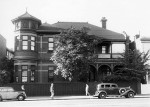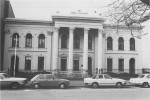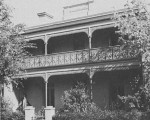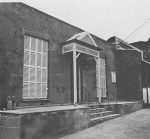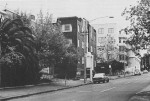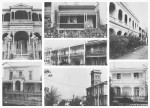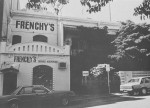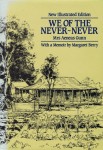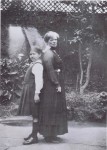Houses
Tasma Terrace
Leaflet produced by the National Trust outlining the history of Tasma Terrace.
- 7453 reads
The Beautiful Hill: an Anthology of Writing from East Melbourne
A collection of short essays and poems written by local identities. Their memories and stories cover a wide variety of subjects relating to East Melbourne.
- 6143 reads
The Cymyn, 166 Wellington Parade, East Melbourne - 1946
Photo of house at 166 Wellington Parade taken in 1946. Shows large two storey house with timber arcaded verandah and timber balcony above and an octagonal turret with elaborate cement decoration beneath the eaves. Built c.1908 for William Gardiner Sprigg who called it The Cymyn. The photographer, Kev Franzi lived in the house in 1940s when it was a boarding house run by his mother.
- 5160 reads
Two cottages, one home
Photocopy of article about the work done by architect Geoffrey Borrack to the two cottages at 93 and 95a Simpson Street to convert them to one house. Some historical notes. The house was scheduled for auction on 3 October 1981.
- 3305 reads
Urban Conservation in the City of Melbourne
Conservation and restoration guide published in 1985 by the City of Melbourne. Many photos of East Melbourne buildings and streets.
Page 9:
Clarendon Terrace, 210 Clarendon Street - A terrace of three units, central one has full height corinthian columns, other two are unadorned.
Page 21:
- 10471 reads
Victorian Heritage Register
Victorian Heritage Register lists all registered buildings and gives short statements of significance and photos for many.
- 3193 reads
We of the Never-Never With a Memoir by Margaret Berry
This edition of the book contains a memoir about Mrs. Gunn by her niece, Margaret Berry. Mrs. Aeneas Gunn lived for many years at 179 George Street, East Melbourne with her two sisters, Lizzie Taylor and Carrie Templeton. Photos.
- 7404 reads
Whitelaws of 74 Simpson Street
Copy of a letter to the occupant of 74 Simpson Street relating to his ancestors who had lived in the house. Accompanying the letter are very poor quality photocopied family photos.
- 2939 reads
Women's Melbourne
Four walks; two in the city, and two in East Melbourne. The walks cover sites associated with women or women's groups, resulting in a diverse collection of buildings and stories. Each site is given a short but comprehensive history, accompanied by a small photo.
- 2970 reads

